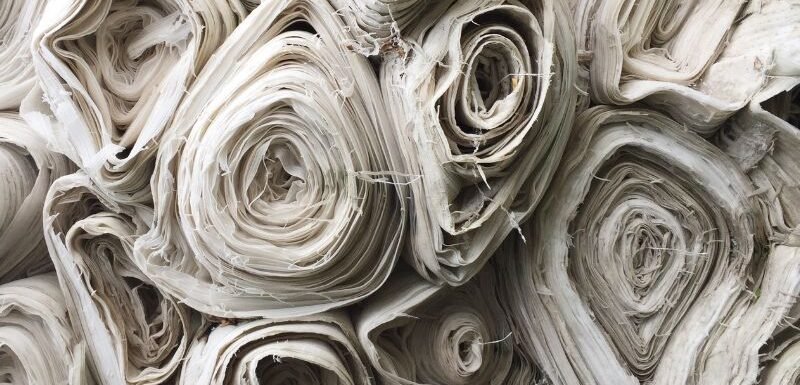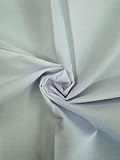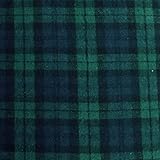Learn how to choose the best backing fabric for quilting — the various types, their pros and cons, and expert tips to create a flawless finish to your quilt.
Just as a well-written novel needs a strong conclusion, a beautifully crafted quilt requires the right backing fabric to give it a perfect finish.
The backing fabric is the unsung hero of any quilt, offering structural support and an additional avenue for creativity. This article will guide you through choosing the best backing fabric for quilting, ensuring that every quilt you create is a masterpiece from front to back.
How to Choose the Best Backing Fabric for Quilting
- The Role of Backing Fabric in Quilting
- Cotton: The Classic Choice
- Polyester and Cotton/Poly Blends: Durability Meets Affordability
- Choosing the Right Fabric: Factors to Consider
- Widths of Backing Fabric: Size Matters
- Popular Quilt Backing Fabric
- Joining Fabric for Quilt Backing
- How to Choose the Best Backing Fabric for Quilting: Final Thoughts
- Related Posts
Affiliate Disclosure: Some of the links on this site are affiliate links. This means I may receive a small commission (at no further expense to you) if you click through and make a purchase. ThreadSketchingInAction.com is a participant in the Amazon Services LLC Associates Program, an affiliate advertising program designed to provide a means for sites to earn commission fees by advertising and linking to Amazon.com.
The Role of Backing Fabric in Quilting
In the traditional 3-layer quilt sandwich (comprised of backing fabric, batting, and top fabric), the backing fabric is the layer that goes at the bottom of the stack, forming the back of the quilt.
It’s not just for aesthetics; the backing fabric plays a critical role in the quilt’s overall durability, warmth, and comfort. It also contributes to the quilt’s drape, impacting how it folds and falls.
Cotton: The Classic Choice
Cotton fabric is a traditional favourite in the world of quilting.
Its breathability, ease of handling, and vast range of colours and patterns make it a popular choice. Cotton fabric has an inherent softness and is lovely to handle, especially after washing.
While pure cotton tends to shrink after the first wash, many quilters use this feature to their advantage, achieving a desirable crinkly, vintage look.
Polyester and Cotton/Poly Blends: Durability Meets Affordability
Some quilters use polyester or polyester blends backing fabric for durability and affordability.
Polyester and Cotton/Poly blends are resistant to wrinkles and shrinkage, making them a long-lasting choice. Additionally, they tend to be lighter than cotton, which can be advantageous for larger quilts.
Is polyester backing fabric a good choice?
It’s worth noting that polyester and blends are less breathable than 100% cotton, which may make them less comfortable and more difficult to handle.
Also, I do not recommend using polyester or polyester/cotton backing fabric for quilts destined to become heirlooms handed down from generation to generation.
In many situations, polyester is a suitable choice for art quilts and wall hangings as they are handled less frequently and rarely (if ever) washed.
Choosing the Right Fabric: Factors to Consider
When selecting the best backing fabric for quilting, consider the following factors:
Quilt Use
If the quilt is for decorative purposes or will be used lightly, both cotton and poly/cotton blends are suitable.
Choose a durable, natural material like 100% cotton for a heavily used quilt.
Comfort
Cotton may be your best bet if comfort is a priority due to its breathability and softness.
Budget
Polyester and blends tend to be more affordable than pure cotton. Consider your budget and how you’ll use your quilt when choosing.
Quilting Technique
Some fabrics are easier to quilt by hand, while others are better suited for machine quilting.
Cotton is often preferred for hand quilting, while polyester and blends work well with machines.
However, as mentioned earlier, natural fibres are easier to handle and stitch than synthetic fibres.
Aesthetics
Consider the backing fabric’s colour, pattern, and texture.
The back of a quilt should complement the front, even if it will be seen less often. Sometimes, backing fabric is visible at the edges of a quilt, so choose a colour that complements and blends with the top fabric.
If your quilt top is a riot of colours, choose backing fabric that coordinates with a dominant, darker colour on the quilt top.
Widths of Backing Fabric: Size Matters
Another factor to consider when choosing the best backing fabric for quilting is the fabric width.
Understanding the different widths available can save you time and effort, particularly when dealing with larger quilting projects.
Standard Quilt Fabric Widths
The most common width for quilt fabrics is around 44 to 45 inches. These widths are a versatile choice for many projects, but larger quilts often require piecing together.
Extra-Wide Quilt Backings
If you want to avoid the piecing process, extra-wide quilt backings are an excellent solution.
These typically measure between 108 to 110 inches in width, providing ample coverage for even king-size quilts.
Choosing an extra-wide backing can save considerable time and ensures a seamless, uniform appearance for your quilt’s back.
This option, however, may be more expensive and less varied in terms of patterns and colours.
Custom Widths
If your quilt doesn’t conform to standard sizes, consider custom-cut lengths of fabric.
Many fabric stores offer this service, allowing you to purchase exactly what you need. This can be a cost-effective solution, but be sure to account for a little extra for any potential mishaps or the need for test swatches.
Understanding fabric widths is key to estimating how much fabric you’ll need for your quilt backing. It can affect the overall aesthetics and crafting process of your quilt.
Remember, whatever width you decide on, always consider the final size of your quilt and any additional allowances needed for the quilting process.
Popular Quilt Backing Fabric
Quilt Backing – Cotton – 108″
This 108″ wide, high quality, cotton quilt backing fabric is available in a range of colours, patterns, and lengths – 1 yard, 3 yards, and 5 yards.
If you prefer to dye your own quilt back fabric, try this 60″ unbleached muslin bolt draping fabric.
60″ Wide Premium 100% Cotton Fabric by the Yard
Buying fabric by the yard gives you the flexibility to purchase only what you need. And this premium 100% cotton fabric, being white, is also perfect if you want to hand-dye your backing fabric before use.
Hand-dyeing gives your quilt a unique appearance — you’ll never see the same colours or patterns on any other quilt!
60″ Wide Premium Poly/Cotton Blend Broadcloth by the Yard
Poly/Cotton blends offer an economical option for backing your quilts. This 60″ wide Premium Poly/Cotton Blend Broadcloth fabric, available in a wide range of solid colours, is comprised of 20% cotton and 80% polyester, so it is predominantly synthetic. However, it has the advantage of being lightweight and smooth to the touch.
FabricLA 100% Cotton Flannel Fabric – 58/60″ Inches
Flannel fabric is ideal for more than just babies’ and children’s quilts — this tartan fabric is perfect for an all-purpose quilt or the man in your life. This high-quality, FabricLA 100% cotton flannel has quite a loose weave, yet feels very warm, breathable, light, and soft against the skin, making it ideal for winter-weight quilts.
Joining Fabric for Quilt Backing
If you’re working with a standard-width fabric or simply don’t have a piece large enough for your quilt backing, don’t worry! Joining fabric pieces is a common practice in quilting, allowing you to create a backing that is as wide or long as needed.
Here’s how to do it:
1. Measure and Cut
Start by determining the total width and length of fabric you’ll need for your quilt backing. Remember to allow extra for seam allowances and shrinkage and to cover the edges of your quilt top.
Also, consider whether you want to use the backing fabric for binding your quilt. If so, you’ll need to calculate the yardage required for the borders.
Once you’ve got your measurements, cut your fabric pieces to the required size.
2. Seam and Press
Place the fabric pieces right sides together, aligning the raw edges.
Sew along the edge with a 1/2″ seam allowance.
Press the seam open with a warm-hot iron, which will help it lie flat and ensure a smoother surface for quilting.
3. Repeat if Necessary
If your quilt requires more width, repeat this process with additional fabric pieces. Be mindful of pattern direction and match any patterns where the pieces join, if necessary.
When stitching together an odd number of segments to form your quilt backing, it’s usually best to make each section the same size. For example, a quilt backing with three sections will be evenly distributed and centred.
4. Trim
After you’ve joined all pieces, lay out your new backing fabric and trim any excess to achieve the required dimensions.
When joining fabric, try to use a seam direction that blends in with the pattern of the fabric. This way, the seam won’t detract from your quilt’s overall appearance.
While vertical seams are more common, horizontal seams may be used if it suits your quilt’s dimensions better.
Remember, even if you don’t have extra-wide fabric, you can still create a beautiful and seamless quilt backing. It requires a bit more work, but the final product will be worth the effort!
How to Choose the Best Backing Fabric for Quilting: Final Thoughts
Choosing the best backing fabric for quilting is integral to the quilt-making process.
Your fabric choice and composition will significantly impact your finished quilt’s look and feel.
However, even if your quilt is an odd size or very large, there is always a solution. And if you have any doubt about what type of fabric to use, opt for 100% cotton.





